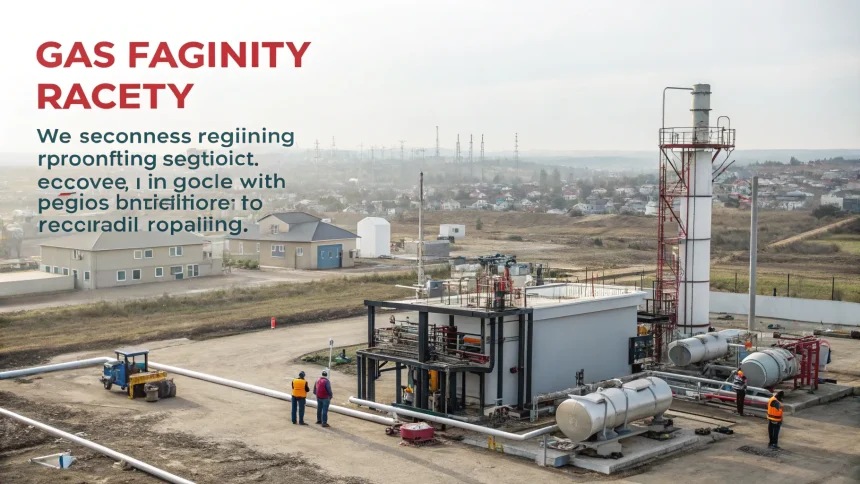A major operator signaled that work will resume on a long-disputed gas project, setting the stage for a new round of economic hopes and environmental pushback. The move, flagged this week, suggests that crews and capital could return to the site soon, although key details remain unclear. Communities near the project face a familiar question: who gains, who bears the risk, and what safeguards are in place?
“It is about to restart a controversial gas project.”
The project has long stirred debate over local air quality, climate targets, and energy security. Supporters point to promised jobs and tax revenue. Opponents warn of pollution, safety incidents, and delayed progress on clean energy goals. With the restart now in play, those arguments are back in the spotlight.
Why the project matters now
Gas fields and processing hubs often rise and fall with market conditions. Prices, export demand, and regional power needs can drive decisions to pause or resume work. A restart can bring construction activity, subcontracting, and service jobs. It can also revive questions about methane leaks, flaring, and emergency response planning.
Local officials typically weigh short-term gains against long-term health costs. Neighborhoods near pipelines and compressors may see truck traffic and noise. Hospitals and schools ask about evacuation routes. Insurers track incident reports. Investors watch for regulatory delays and litigation risk.
Economic promises versus community costs
Backers argue that new gas supply can stabilize power prices and support manufacturing. They say the project could draw investment to nearby towns. Hiring in construction and operations may follow, along with spending at local businesses.
Residents near the site often see the tradeoffs differently. They worry about air pollution and property values. Small businesses that depend on clean water and steady tourism, like outfitters or wineries, fear reputational damage if accidents occur. Many ask for firm guarantees on monitoring, penalties, and emergency drills.
- Potential benefits: jobs, tax revenue, energy supply.
- Key risks: air emissions, methane leaks, safety incidents.
- Community needs: transparent monitoring and swift enforcement.
Environmental rules and oversight
A restart usually triggers a review of air and water permits, pipeline integrity tests, and worker safety plans. Agencies can require continuous emissions monitoring, fence-line sensors, and public reporting. Permit conditions may include limits on flaring, stronger leak detection, and timelines for repairs.
Critics often call for independent audits and public dashboards. They ask for frequent inspections and fines that deter repeat violations. Supporters say clear rules and predictable timelines help companies plan and comply. Both sides agree that data should be accessible and verified.
What experts say about methane and climate goals
Methane is a potent greenhouse gas. Even small leaks can have large effects over a short period. Engineers argue that modern detection tools can cut losses and reduce emissions. Community groups counter that enforcement gaps and contractor turnover can weaken compliance.
Energy planners describe gas as a bridge fuel in some regions, especially where power grids rely on quick-start plants. Climate advocates warn that new gas infrastructure can lock in emissions for decades. They push for firm deadlines to retire fossil assets, along with storage, demand response, and transmission upgrades.
Transparency and trust
Public trust often hinges on timely information. People want to know where emissions occur, how fast leaks are fixed, and who pays for violations. Clear communication during construction and operations can calm fears and correct rumors.
Meaningful engagement includes meetings at accessible hours, translations, and responses to written questions. Communities also ask for health studies and baseline testing before work resumes. That allows later comparisons and targeted remedies if problems arise.
What to watch next
The coming weeks may bring announcements on permits, timelines, and safety plans. Observers will look for credible monitoring commitments and community benefits agreements. Financial disclosures could reveal spending plans and contingency funds.
Many will also watch for formal channels to report concerns. A fast complaint process, real-time monitoring, and public dashboards can prevent small issues from becoming crises. Strong oversight could decide whether the restart gains local support or deepens opposition.
The restart, flagged with the words, “It is about to restart a controversial gas project,” puts sharp choices in front of regulators, residents, and investors. The next steps will show whether the project can meet modern standards for safety, emissions, and public trust. The outcome may set a template for how gas operations proceed in similar communities.







